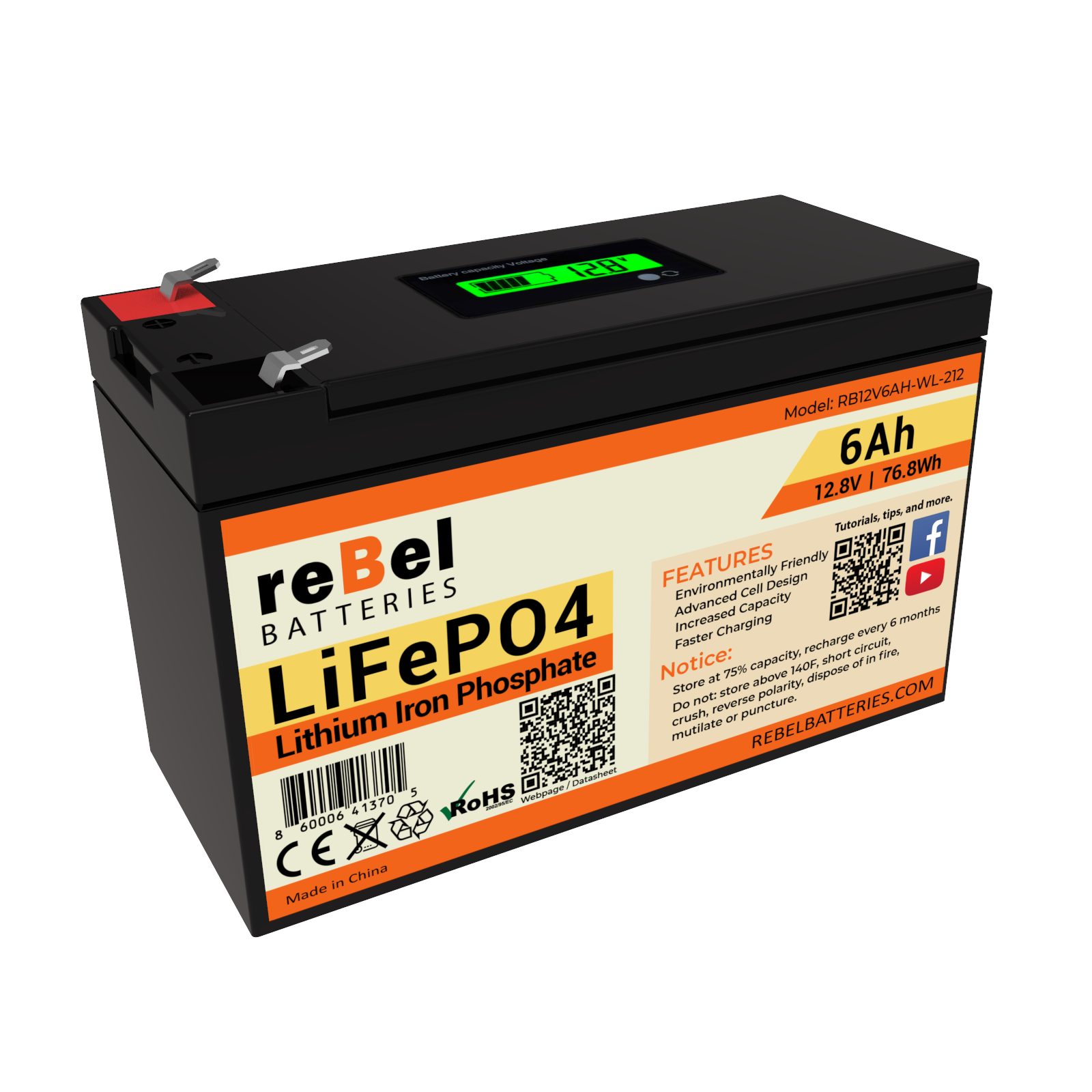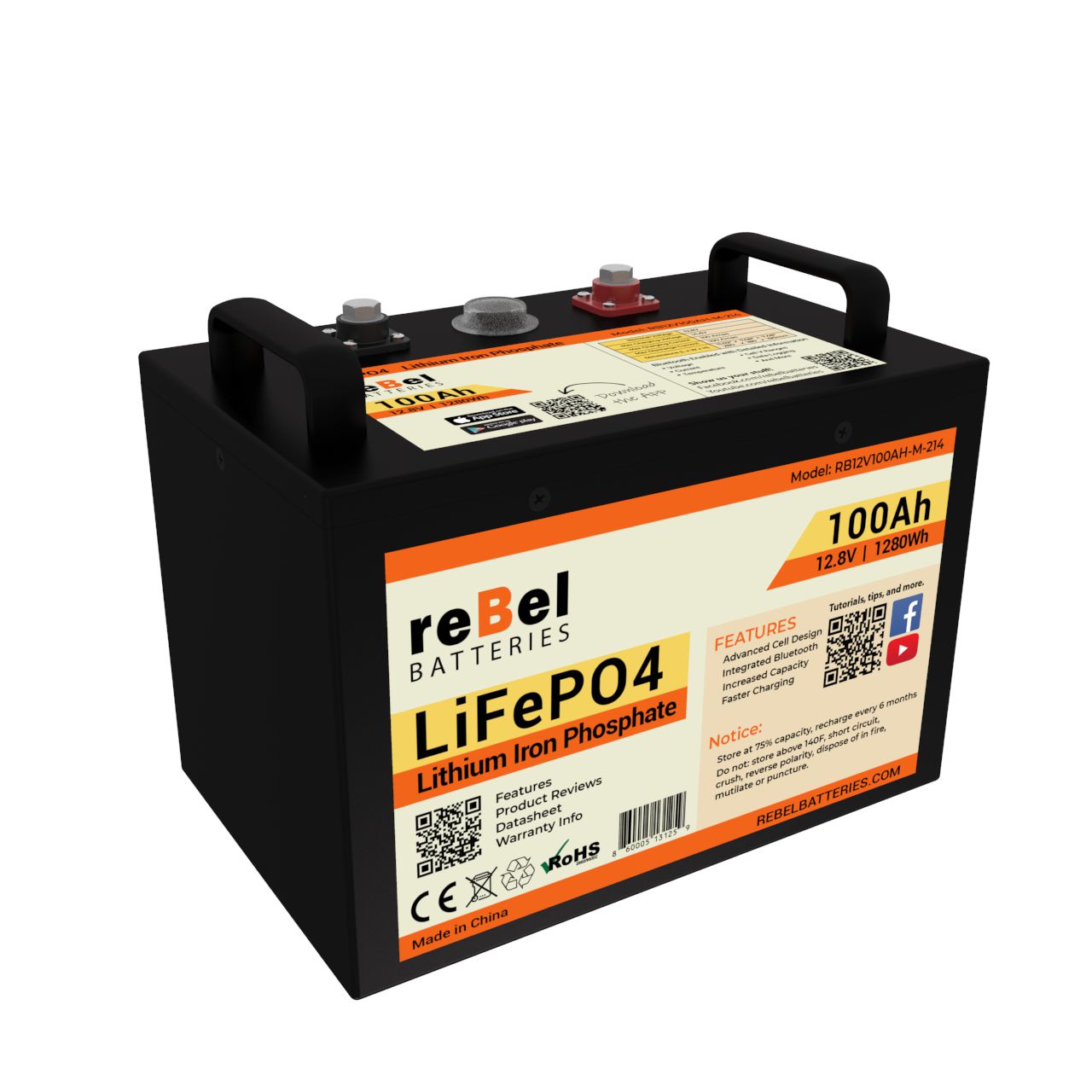How long will a Lithium Iron Phosphate battery last under a light load and is there really a big enough difference between Led-acid and LiFePO4 batteries to make switching to LiFePO4 worth it?
For the second question the short answer is if you're not someone who babies your batteries by only using ten or fifteen percent of their capacity at the battery's hour rate yes. Then there's the fact Led-Acid batteries shouldn't be discharged below 50 percent. If you're out having a good time on a camping trip the last thing you're going to want to do is sit looking at a meter watching your battery.
And I've never known anyone using a wheelchair that paid any attention to how low the battery is. When their chair slows down they charge the battery unaware the battery is far below fifty percent by that time. The reality is most people discharge their batteries well below 50 percent and many people I talk with don't know a thing about batteries and didn't know you shouldn't or that you do damage to the battery shortening its life every time you go below fifty percent.
Lithium Iron Phosphate batteries on the other hand can be discharged down 100 percent several thousands of times without damaging the battery and at the end of those cycles the battery will still have a good share of the capacity it had when it was new. How much of that capacity?
Depending on how the battery was cycled as much as seventy percent. The BMS in the battery prevents the cells from being over discharged so you don't have to baby sit the battery. Then there's a great deal of voltage sag with Led-Acid batteries while LiFePO4 batteries drop in voltage very slowly staying above 12V until near the end of their cycle as you will see in a minute.
If you know nothing about batteries to make this real simple here's what you need to know. With Led-Acid batteries the usable amp hours are dependent on load. If you buy a 100 amp hour battery you only get 100 amp hours if you discharge the battery at its hour rate. That's five amps over twenty hours if the hour rate is twenty hours, and most of that current won't be usable above 12V. And remember that's a full discharge.
You're only suppose to use fifty percent which means you should only use fifty amp hours from that battery to prevent damage. A Led-Acid battery can provide a much higher current than its hour rate, but, you won't get 100 amp hours, and the higher the current the faster the voltage will sag. Lithium Iron Phosphate batteries on the other hand will give their rated amp hours regardless of whether you discharge at five amps or the full C-rating of the battery and provide ninety percent or more of their capacity above 12V.
Even if you give a Led-Acid battery the best of care unless you're only using a very small percentage of the battery like when you start your car you only get two or three hundred cycles out of them if you're discharging to fifty percent and here's the thing. What is fifty percent when the battery is new quickly changes as the battery deteriorates.
So if you don't have a meter and calculated you could run something for a certain amount of time that works when you first install the battery. But after discharging to fifty percent three or four times you Loose a few amp hours, and now might be discharging to fifty five percent. But without a meter you won't notice the great loss in capacity until several cycles later when the battery is damaged to the point you either notice in isn't lasting very long or it completely dies.
Lets say you never go below 50 percent and only use lights so really don't care about voltage sag. I'm sure all you want to know is if you don't is the switch really worth it? With all the advantages of LiFePO4 set aside including the cycle life is the voltage sag really enough to worry about if you're only using two or three amps?
If you want proof here is what you're looking for, a real world example that will also answer the first question. I haven't seen many real world tests showing results out there so I decided to do my own to show the difference. For this test I used a 100AH Led-acid battery the average person might buy that says it can be deep cycled or used as a starting battery. We happen to have one of those batteries in our Jeep. They install them in Jeeps because of the extra accessories people use for a short time without the engine running which we haven't had any reason to use. The battery has never been cycled other than starting the car, but, it's three years old and as I saw today will have to be replaced in the near future.
For the Lithium Iron Phosphate battery I used the reBel 100AH metal case battery. The load was a 2.7 amp load from a small cooler. This was the only load I used on the Led-acid battery. I only went ten minutes with the Led-acid battery because that was long enough to prove the point. To answer the other question I have been asked I completely cycled the reBel battery using various current loads. Here are the results.
To give the Led-acid battery the advantage I ran the test on it a few minutes after my wife and I got home so it was fully charged, but to my surprise the voltage was 12.3V. A resting voltage of 12.4V is borderline. We're just under that mark but the battery still starts the car fine and doesn't sound weak yet. When the load was applied the voltage slowly sagged to 12V in ten minutes time. If this had been a newer battery and the voltage was 12.9V the voltage sag still would have been at about the same rate dropping below 12V long before 50 amp hours were used and this load is even below a twenty hour rate. Some new Led-acid batteries I have used in the past sagged real close to the rate this battery did so I know this was pretty average.
The reBel battery was also fully charged but had been off the charger for a full 24 hours. I used various loads to show just how much power you can get from this beast. Take a look at these extremely impressive results!
Before starting the test the voltage on the reBel battery was 13.44V. After the load was applied the voltage settled to 13.24V. This is normal. The heavier the load the lower the voltage will settle to.
Thirty minutes, 13.24V.
Two hours thirty minutes, still 13.24V. A 2.7 amp load for two and a half hours hasn't even touched the Lithium battery.
Seven hours, 13.23V. This load still hasn't fazed this battery at all.
Sixteen hours, 13.07V and the battery still had over 60 percent of its capacity left. So if you are only using three amps or less you could easily get 24 hours from this battery or be covered over the longest night of the year if you needed as much as seven amps to power a furnace.
So how about heavier loads? Do you get much drop in voltage considering forty percent of the battery has been used?
Next I increased the load to 16.5 amps. The voltage stabilized at 12.97V which isn't much of a voltage drop at all and it stayed right there for some time.
One hour and thirty minutes, 12.9V. The current had increased to17 amps.
Two hours, 12.83V.
Three hours, 12.55V. The amps had increased to 18. A few seconds later my first charging load finished and the amps dropped to 11.98 amps.
Twelve minutes later another load finished its work and the current dropped to eight amps. At that point I was at nine percent capacity remaining and the voltage was 12.46V.
At five percent capacity I reached 12V. From that point I used a five amp load to show how long lights could still be used and got close to a half hour before the BMS turned the battery off.
As you can see the tests speak for themselves. LiFePO4 batteries are the only way to go if you want stable long lasting power. Want to see more proof? Here's the link to a video showing this.
See this video of one test that was done and see for yourself the cycles Lithium Iron Phosphate batteries are capable of as well as just how short the cycle life on Lead-Acid batteries are. This video is one of the best tests I've seen done using the kind of cycles many people using inverters or just lights put their batteries through. As you will see with Lithium Iron Phosphate batteries you can cycle your battery this way and use all of the capacity you pay for.
So is it worth switching? I would say the switch is well worth it.



